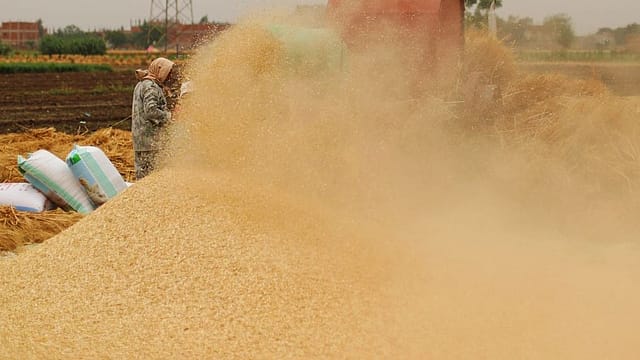IMD issues advisory to wheat farmers amid high temperature
ADVERTISEMENT

Higher day temperatures might lead to adverse effects on wheat as the crop approaches reproductive growth period, which is sensitive to temperature, according to the India Meteorological Department.
In an advisory to farmers amid higher day temperatures in Punjab, Haryana, and Rajasthan, the IMD cautioned that high temperature during wheat flowering and maturing period leads to loss in yield.
Farmers are advised to check if the crop appears to be under stress, light irrigation can be provided, the weather office said. "To reduce the impact of higher temperature, add mulch material in the space between two rows of vegetable crops for conservation of soil moisture and maintaining the soil temperature," it added.
There could be a similar impact on other standing crops and horticulture, the Met department warned.
The weather forecaster has predicted maximum temperatures to be above normal by 3-5 degree Celsius over northwest, central and west India during the next five days.
However, maximum temperatures are very likely to fall by 2 degree Celsius over the northwestern part of the country during the next two days but no significant change is expected thereafter.
January 2026
Netflix, which has been in India for a decade, has successfully struck a balance between high-class premium content and pricing that attracts a range of customers. Find out how the U.S. streaming giant evolved in India, plus an exclusive interview with CEO Ted Sarandos. Also read about the Best Investments for 2026, and how rising growth and easing inflation will come in handy for finance minister Nirmala Sitharaman as she prepares Budget 2026.
Unseasonal heat waves had adversely affected wheat output in March last year, forcing the government to restrict wheat exports due to a shortfall in the rabi production.
Recent years have seen a spurt in climate-change events, like heat waves and erratic monsoon which has resulted in lower production of wheat and paddy, said Pushan Sharma, director of research, CRISIL Market Intelligence & Analytics.
Sharma expects cereal prices to remain elevated well into next fiscal due to a troika of factors — vagaries of climate change, strong global demand, and rise in domestic demand.
The stocks of wheat and rice are estimated to be lower by 12% and 35%, respectively, for fiscal 2023, leading to a surge in prices of these commodities, said Sharma.
The ongoing war between Russia and Ukraine, which together contribute to 20-25% of world wheat exports, created disruptions in the market in 2022. India bridged the gap by exporting 7 million tonnes of wheat last year. This, however, depleted the wheat stock in the country, following which the government banned wheat exports in May 2022. Despite this, India has exported a further 4.6 million tonnes of wheat as of December to fulfil previously committed consignments.
Anticipation of higher production of wheat in the current rabi season is expected to improve the stock condition, which may put downward pressure on prices, though heatwaves remain a key monitorable, CRISIL said.
